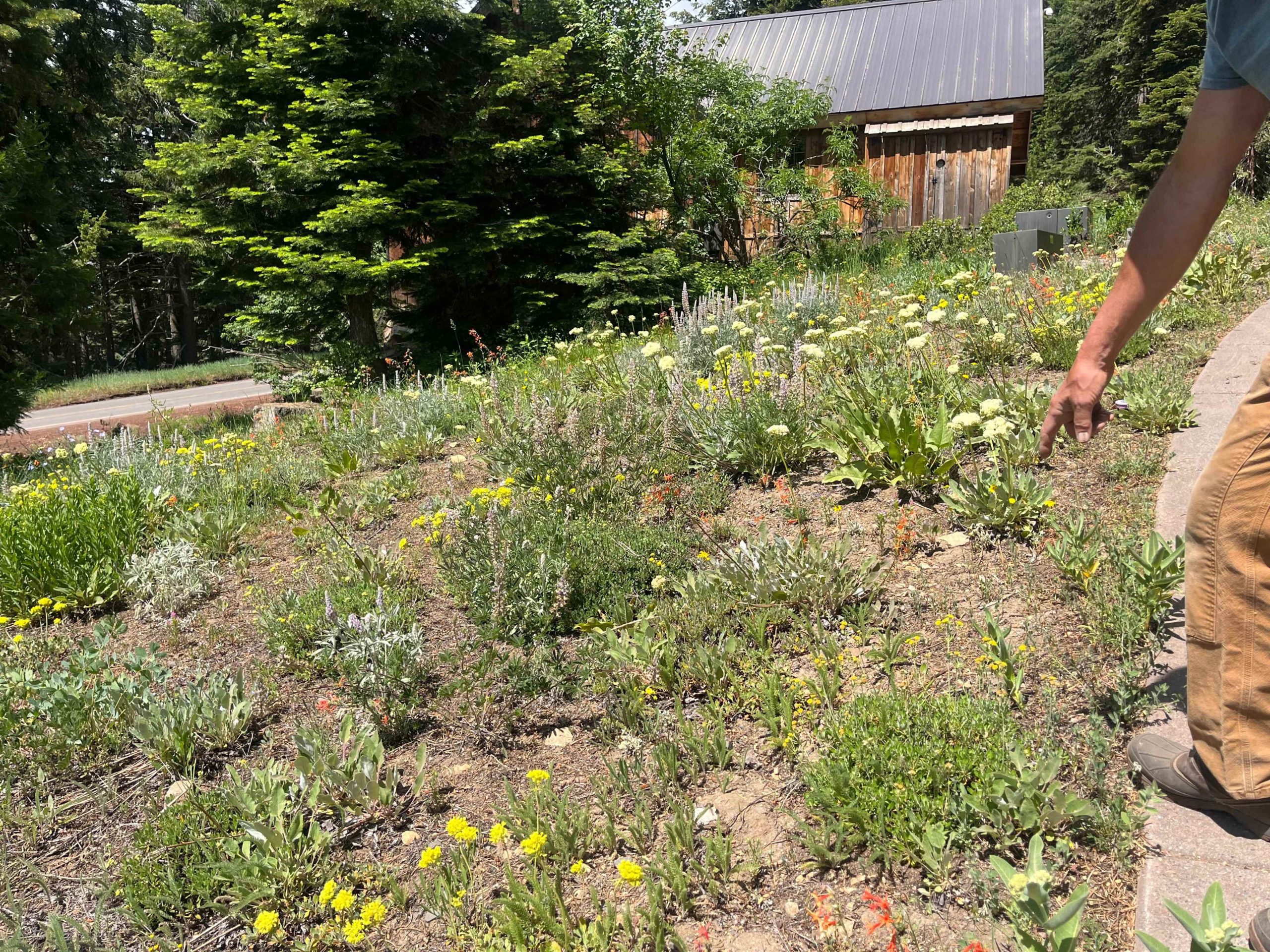Exploring the Benefits of Native Plants in Home Gardens
A group of home gardeners recently ventured into a wild meadow on Mount Ashland in early July, following the guidance of native plant expert Suzie Savoie. Their goal was to find inspiration for low-maintenance landscapes that could bring the beauty and benefits of wildflowers into their own backyards.
Savoie, a botanist and co-author of “Native Pollinator Plants for Southern Oregon,” teaches gardeners how to recreate the natural ecosystems found in wild meadows. She emphasizes the importance of using native plants—those that have evolved over thousands of years in specific regions and ecosystems. These plants not only thrive in local conditions but also support wildlife by providing essential resources like nectar, pollen, and habitat.
Native trees and flowering plants can be both water-wise and fire-resistant when planted in the right location. They also serve as breeding grounds and nesting sites for pollinators such as butterflies and bees, which are increasingly threatened by pesticides and habitat loss.
During a garden design workshop, Savoie encouraged participants to experience wild landscapes firsthand and then see how wildcrafted seeds could be intentionally planted on private property to attract nature. For example, plants like pink Oregon checker mallow and daisy-like sneezeweed, which grow naturally along hiking trails, could be used to enhance a yard.
Savoie stopped at a moist area of the meadow filled with tall stems of yarrow, which has white and yellow flowers and emits a chrysanthemum-like scent. This plant attracts bumblebees and gossamer-winged butterflies, making it an excellent addition to any pollinator-friendly garden. While common yarrow can spread rapidly in well-irrigated gardens, it can be controlled in dry conditions.
The first step in creating a native garden is to understand what’s already growing in your yard and nurture existing native plants, which may be hidden beneath invasive weeds. Savoie emphasized the importance of learning about local wildlife and ecosystems to protect them effectively.
Mount Ashland’s meadows, once denuded by livestock grazing, are now recovering naturally. Savoie pointed out the presence of sedges, which are indicators of ecological health. She and her husband, Luke Ruediger, an expert in ecological land restoration, study nature’s methods of mixing native plants by exploring different habitats in Northern California and southern Oregon.
They collect seeds from native wildflowers, grasses, shrubs, and trees and sell them through their company, Klamath-Siskiyou Native Seeds, based in the Applegate Valley. Savoie believes that observing nature means really seeing what’s there. “Native grasses are easy to ignore, but a lot of critters need them,” she said.
Butterfly Garden Inspiration
During a half-day workshop, Savoie provided participants with a list of plant species growing wild on the mountain and visited homeowner Mark Newberger’s pesticide-free butterfly garden. Savoie has worked with Newberger for nine years, using harvested seeds from 60 specific native species to nature-scape two acres of his property.
In both the wild meadow and Newberger’s yard, the gardening group observed yellow-flowered Oregon sunshine, which serves as a host plant for painted lady butterflies. They also smelled aromatic horsemint, a drought-tolerant herb, and purple fleabane, which provide nectar for bees and butterflies.
The group took photos of hummingbird-attracting scarlet gilia and red wavy leaf paintbrush. Savoie explained that red flowers tend to attract hummingbirds. Nearby were Western columbine, blue wild flax, and purple flower honeysuckle. Monarch butterflies lay eggs on showy milkweed, while other species like pale swallowtail and Lorquin’s admirals land on tower rockcress’ small creamy flowers.
Towering over mountain blue penstemon and yellow arrowleaf mule’s ears are tall cream-colored beargrass and cow parsnip. Savoie advised gardeners to include tall plants in their designs to create a layered effect. She also encouraged leaving patches of bare ground for native bees and ants to transport seeds.
Native Garden Tips
When planning a native garden, Savoie advises considering site-specific conditions such as soils, slope, aspect, elevation, shade or sun, and moisture levels. Other factors to consider include weed pressure and the impact of animals like deer, squirrels, and rabbits.
Natural fertilization and soil conditioning are key. A network of mycorrhizae and plants like lupines can help fix nitrogen in the soil. The book “Native Pollinator Plants for Southern Oregon” offers additional guidance on selecting the right plants.
Perennials and annuals each have their advantages. Annuals establish quickly and provide a burst of flowers, while perennials offer long-term blooms. Bloom times should be considered to ensure a continuous supply of nectar and pollen throughout the growing season.
Natives versus cultivars: If using cultivated varieties, choose those least hybridized to maintain pollinator value. Double flowers often sacrifice nectar for showiness.
Garden use versus wild planting: Some native species may not be suitable for natural areas, so it’s important to consult local experts before planting. Using locally sourced plants ensures the conservation of regional genetics and adaptation.







